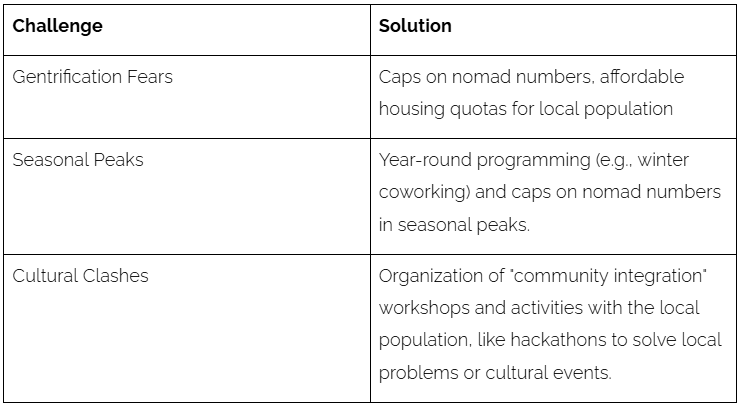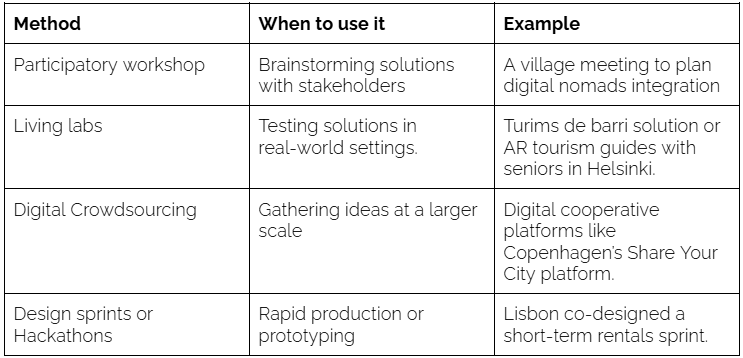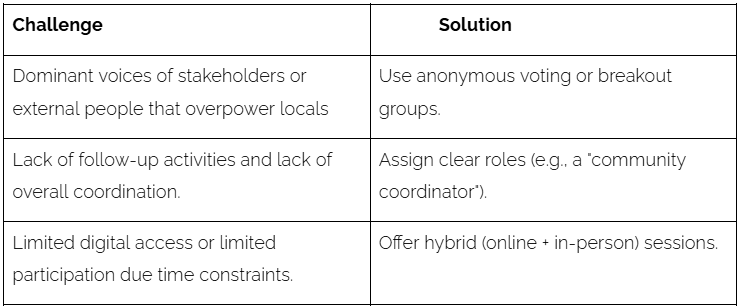Social Innovation, and Civic Engagement
Smart tourism and social innovation
What is social innovation?
The European Commission defines Social Innovation as new ideas that meet social needs, create social relationships and form new collaborations. Recent events in different European regions and cities have raised concerns not only about environmental sustainability but also about social sustainability. Rising rental prices in city centers and gentrification, as well as the consumption of natural resources such as water, have put the spotlight on tourism as an unsustainable activity not only from an environmental point of view but also from a social perspective.
Tourism experiences are based on two basic pillars: the physical place being visited and the socio-cultural structure of the local inhabitants, and the need to find a balance between a constant activity that brings a sufficient flow of tourists to a certain place to deseasonalize certain destinations, avoid seasonal avalanches, and protect the territory and the rights of the inhabitants of that same place is becoming more and more evident. At the same time, the UN Tourism office states that technological advances such as the Internet of Things (IoT), location-based services, artificial intelligence, and augmented and virtual reality have been successfully incorporated into the tourism sector, which has constituted an advance in terms of environmental sustainability by being used to control tourist flows, calculate the impact of seasonal tourism, ensure accessibility in places, and gather a great amount of data to help tourism managers to better adapt their offer to the needs and trends in the sector.
Under this module we will explore how the use of smart tools for tourism can be applied not only to seek environmental sustainability but also social sustainability via social innovation solutions.
The concept of smart data is used in the development of technological and social products that are based on technological infrastructure, and the data generated, as well as new forms of connection and exchange of knowledge, are used as part of that development.
The UNWTO highlights the relationship between technological development and new forms of tourism, since it is a sector that has incorporated technological development from the beginning, whether by developing reservation centers, adapting to the promotion of destinations through social networks and other new forms of marketing, web technologies, etc. Currently, tourists have a large amount of information available in the palm of their hand through their phone, which allows them to find out what a place has to offer, compare prices, make reservations, and create their own experience by choosing from all the available options. Smart tourism can make destinations more attractive options for tourists and offer them the ability to create experiences tailored to their interests and needs.
Examples of social innovation in tourism:
Couchsurfing: Couchsurfing was born as a technological and social innovation platform in which users created an alternative to traditional tourism in which users were able to interchange accommodation and be integrated in the daily activities of hosts. In 2020, as a response to the crisis caused in the tourism sector by the COVID-19 and lockdowns, the platform introduced a subscription fee for users to access the web or the app, and the number of users dropped dramatically. Couchsurfing reversed the measure as users were not keen to pay to access the tool.Fairbnb: This cooperative offers an alternative to Airbnb that offers a direct profit to community projects while offering short-term rentals for tourists. The platform has several rules to avoid the negative effects of Airbnb in the communities. 50% of the profits of the platform are re-invested in social projects and users get to vote to which projects they want to contribute; unlike Airbnb, Fairbnb shares their financial data. One host, one home: the platform has a limit of one property per host to prevent commercial exploitation.
Wheel the World: This platform is dedicated to making tourism accessible for people with disabilities by offering curated trips, adapted accommodations and detailed accessibility information. The platform offers a detailed filter so users can choose the destination or activities that are more suitable for them. The platform offers tailored experiences like wheelchair-friendly hikes in Patagonia or adapted scuba diving, challenging the misconception that adventure travel is only for able-bodied people.
Ripple Score by G-Adventure: This travel agency developed the Ripple Score to measure how much money from their tours stays within the local economy. The score (expressed as a percentage) tracks spending at locally owned businesses (e.g., hotels, restaurants, guides) versus leaking out to multinational chains. They gather as much information as possible from local suppliers and audit each tour to determine the proportion of spending that goes to local suppliers; for example, a Ripple Score of 93% means 93% of the tour’s expenses directly benefit the community. This page encourages tourism that is run by small businesses, and travelers can make informed choices, fostering the demand for ethical tourism.
Albergo Difusso: This model promotes the revitalization of abandoned Italian villages by turning them into hotels. The initiative seeks to restore depopulated towns instead of building new resorts. The initiative seeks to promote the management of hotels by cooperatives or municipalities to ensure local benefits. Towns like Santo Stefano di Sessanio (Abruzzo) reversed decline by attracting tourists and new residents, and at the same time they saved historic architecture and traditions at risk of disappearing.Models for creating social innovation initiatives in smart tourism
Smart tourism leverages digital technologies (e.g., IoT, AI, big data) to enhance sustainability, efficiency, and inclusivity in travel. When combined with social innovation, it creates models that address societal challenges while improving tourism experiences. There are several models that can be used in the creation of social innovation solutions for smart tourism, and many of them are already pointed out in the previous examples.
Public-Private-Community Partnerships (PPCP):
Collaboration between governments, tech firms, and local communities to co-create solutions. that combine Smart + Social Elements:
Example: Barcelona’s "Turisme de Barri" This app uses data analytics to divert tourists from overcrowded areas (like La Rambla) to lesser-known neighborhoods. The local businesses and residents collaborate via an app that promotes hyper-local experiences (e.g., workshops with artisans). This app reduces overtourism while distributing economic benefits, as it makes use of crowdsourced data to identify under-visited areas. and also makes connections with local NGOs to design community-led tours in those undervisited areas. To ensure the sustainability of these initiatives in the mid or long term, the role of public entities is fundamental, as they can provide financial support and also technical support to the app's sustainability.
But how was this initiative born, and what are the objectives of Turisme de Barri?
Barcelona receives over 30 million visitors annually, leading to:
-
Overcrowding in the city center.
-
Rising rents and displacement of locals.
-
Erosion of authentic culture (e.g., souvenir shops replacing local businesses), and the city is perceived as a tourist trap.
Under these premises, the city council decided to launch a collaborative program with neighborhood associations, small businesses, and cultural groups to identify:
-
Under-visited but culturally rich areas.
-
Local assets (e.g., historic workshops, indie theaters, family-run eateries).
-
Participatory workshops let residents design tours and activities.
The proposed solution is a dedicated website/app (turismedebarri.cat) that includes:
-
Self-guided routes (e.g., "Modernist Sants," "Poblenou’s Industrial Heritage").
-
Local-led experiences (e.g., vermouth tastings, textile factory tours).
-
Uses smart data to track visitor dispersion and adjust promotions.
The challenges and criticisms raised by this app are:
-
Dependence on Digital Literacy: Older residents struggle with app-based tourism.
-
Gentrification Risk: Rising interest in "authentic" neighborhoods could backfire.
Even if the overall experience is positive, the solution is not fit for all types of travelers, and the city council had to add printed maps and community info points for those travelers that are not into digital technologies.
Other cities and tourism destinations have implemented similar solutions, such as Amsterdam’s "Stay Away" Campaign. This campaign redirects tourists from the Red Light District to other less visited and more cultural districts.
Circular Economy Tourism Hubs and Digital Nomad Villages for Rural Revival
These two initiatives are presented together as they can complement each other and also can be born as a public-private community partnership. They need to implement renewable energy solutions and circular practices to attract sustainable tourism and also remote workers that can support local economies and repopulate remote areas.
Key aspects of Circular Economy Tourism Hubs:
They are regenerative destinations designed to eliminate waste, maximize resource efficiency, and empower local communities by applying circular economy principles to tourism. Unlike traditional tourism (which often follows a "take-make-dispose" model), these hubs focus on closed-loop systems, where waste becomes a resource and economic benefits stay within the community.

Examples of Circular Economy Tourism Hubs:
Svart Hotel (Norway)
-
The world’s first energy-positive hotel, powered by solar/geothermal energy.
-
Uses IoT sensors to optimize the use of resources (e.g., water recycling, food waste tracking).
-
Impact: Trains locals in green jobs and attracts eco-conscious travelers.
How to Develop Circular Tourism Hubs:
Step 1: Assess Local Resources & Challenges
-
Check the availability of spaces to recover.
-
Audit waste streams, energy use, and community needs.
-
Identify circular opportunities (e.g., converting food waste into biogas).
Step 2: Engage Stakeholders in Co-Creation
-
Involve locals, businesses, and tech experts in planning (e.g., participatory design workshops).
Step 3: Integrate Smart Technologies
-
Install IoT sensors for real-time energy/water monitoring.
-
Use IT tools for reaching new customers, mapping in real time the affluence of tourists, etc.
Step 4: Measure & Communicate Impact
-
Track KPIs like waste diversion rates, local hiring, and carbon savings.
-
Certify with EarthCheck, Green Key, or B Corp for credibility.
-
Assess the number of users that are not making use of IT tools and integrate offline solutions if needed.
Example of Nomad villages for Rural revival in Madeira (Portugal):
-
Offers high-speed internet, co-working spaces, and cultural immersion programs.
-
Nomads volunteer with locals (e.g., teaching coding in schools).
-
Impact: Revives villages while fostering cross-cultural exchange.
Key aspects of Nomad Villages:
As this type of village is emerging in many areas, they are also a powerful tool to revive declining rural regions by attracting remote workers in a space that combines smart infrastructure, community integration, and sustainable tourism.
Benefits of Nomad Villages:
A. Tackling Rural Depopulation
Many rural areas face aging populations, youth outmigration, and economic decline.
Nomad villages reverse depopulation by attracting skilled professionals who spend longer periods in these villages.
B. Economic Boost
Nomads rent homes, eat at local restaurants, and use services, creating jobs for local inhabitants and attracting other workers to stay there permanently.
Example: In Ponte de Lima, Portugal, nomad spending increased local business revenue by 20% in 2022.
C. Sustainable Tourism Alternative
Unlike mass tourism, nomads stay longer (weeks/months) and leave a lighter footprint compared with mass tourism.
Nomad villages also require a series of infrastructure that is beneficial to locals, like the installation of high-speed internet connection in rural areas.
At the same time, the creation of Nomad villages may pose challenges and fears in the local population, such as:

How to launch a Nomad Village:
Step 1: Assess Local Readiness
-
Basic amenities (healthcare, groceries)?
-
Fast internet connection
-
A "hook" (nature, culture, low cost)?
-
A place to restore? Ensure that locals have a place to live too?
Step 2: Build Partnerships
Check the availability to establish private-public partnership with local councils, etc.
Step 3: Market Strategically
-
Target niches (e.g., "eco-conscious nomads" or "outdoor lovers").
-
Use influencers to showcase the place and what makes you different.
Step 4: Ensure Community Benefits
-
Require nomads to mentor locals or volunteer.
-
Involve local businesses in your business as providers and collaborators.
-
Invest revenue in the local community.
The importance of co-creation in smart tourism and in social innovation:
Traditional tourism often imposes top-down models like results built without local input, while the co-creation of solutions involves residents in the decision-making process and ensures that the projects are beneficial for the local community. The benefits can be the solution of problems faced by that territory (such as the lack of a high-speed internet connection) or the solving of actual problems caused by mass tourism, like the restoration of degraded spaces.
As we saw in previous sections, co-creation is a powerful tool to collaboratively create solutions and entrepreneurial ideas with relevant stakeholders. Below you can find the steps to run a co-creation session. Feel free to adapt it to your needs, as it is not a closed process:
Step 1. Define the Challenge & Goals
Examples:
-
A rural village wants to attract digital nomads without displacing locals.
-
An NGO wants to start a communal garden in their area.
Actions:
Conduct surveys/interviews to identify pain points (e.g., lack of housing, weak internet).
Set clear objectives (e.g., "Create a nomad hub that benefits residents").
Step 2. Identify Stakeholders
Who to Involve: it is important to reflect who your main stakeholders are, and at the same time, if you are willing to let other groups join the activity, just consider the participation to any person willing to take part in it, even if it is not in the initial group of stakeholders you had in mind.
-
Locals (residents, artisans, farmers).
-
Businesses (cafés, farmers, potential workers).
-
Government (tourism boards, urban planners, representatives from local and/or regional authorities).
-
Experts (tech providers, NGOs).
-
Schools and other education centers from the area.
Action: Create an engaging invitation and promote the event in social media to attract as many participants as possible.
Step 3. Choose a co-creation method based on the outcome you wish to achieve:
This is an exemplificative list; try different tools and use the one that better fits your goal and adapt existing ones:

Step 4. Facilitate Inclusive Collaboration Tools:
Sometimes it is easy to get lost while trying to record all the things and ideas that pop up during a co-creation session. So it is better to think on how you are collecting the information that is going to be generated during the session, depending on the activity you may think of recording on video, put in place a digital collaborative tool like Miro or any other mural for virtual brainstorming, etc.
Tips:
-
Use neutral facilitators to avoid power imbalances.
-
Provide translators if needed (e.g., for indigenous communities).
-
Think of potential barriers for participants: if you put in place a digital tool, think of how to facilitate the participation of users with low digital skills.
Common Pitfalls & Solutions during a co-creation session:

Step 5. Implement & Iterate
The implementation of an idea is a complicated phase, so before launching a full-scale idea, think on how to prototype it on a smaller scale if possible. For example, Fairbnb launched in 5 cities, then refined based on host feedback.
Tips:
-
Start small (one neighborhood/one tech tool).
-
Adjust based on data (e.g., visitor tracking apps).
Step 6. Measure Impact & Scale& Refine
It is important to track the implementation to understand if the idea is working or not, areas of improvement, refinement of the idea before launching the full-scale prototype, etc.
Examples of metrics to track:
-
Economic: % of tourism revenue staying local (like G Adventures’ Ripple Score).
-
Social: Resident satisfaction surveys.
-
Environmental: Waste reduction (e.g., Soneva Resorts’ 90% recycling rate).
-
Number of users that use the app more than once.
-
Level of satisfaction with the product/service rated by users.
-
Sustainability of the idea/service/product in the mid and long term.
If one or more of the metrics is showing a performance of the idea that may compromise the sustainability of the idea in the mid- or long-term, it is time to come back to previous steps to rethink the idea, add new functionalities to improve it, or plan a new pilot and measure more metrics if you cannot detect exactly what is going wrong.
Innovation is not a linear process; you always need to be aware that things may not work on the first attempt and you need to change the process, way of thinking, etc.
Closing Message
You’ve reached the end of Module 7—and what a journey it’s been! You now understand how smart tourism and social innovation can transform communities, protect cultures, and create meaningful travel experiences. Whether it’s supporting platforms like Fairbnb, advocating for circular economy hubs, or co-designing solutions with locals, you have the tools to be part of this change.
Remember: Tourism isn’t just about visiting places—it’s about leaving them better than you found them. So, as you explore the world (or even your own neighborhood), think critically, collaborate openly, and innovate fearlessly. The future of travel is in your hands!
Keep exploring, keep innovating, and most importantly, keep making a difference!
